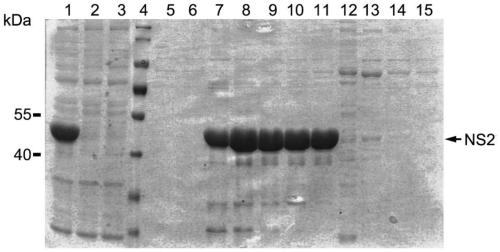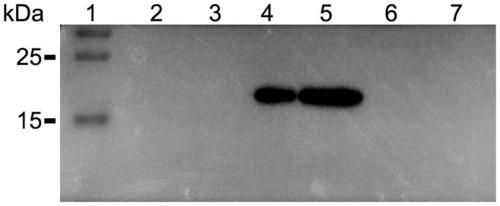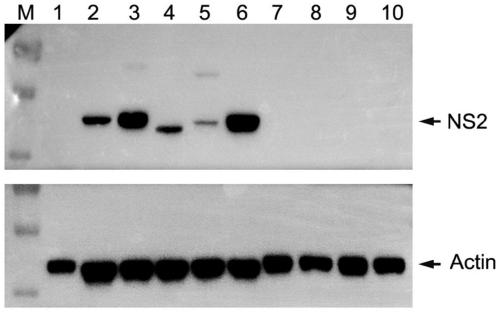Monoclonal antibody of specificity detection of bluetongue viruses and hybridoma cell strain and application of monoclonal antibody
A technology of hybridoma cell line and bluetongue virus, applied in the field of basic research and prevention of bluetongue disease, can solve the problems of insufficient specificity, delayed bluetongue disease, high homology, etc., and achieve simple and reliable operation High, reliable and accurate results
- Summary
- Abstract
- Description
- Claims
- Application Information
AI Technical Summary
Problems solved by technology
Method used
Image
Examples
Embodiment 1
[0067] Embodiment 1 culturing and screening hybridoma cell lines
[0068] 1. Main experimental materials
[0069] 1.1 Main biological living materials
[0070] BHK cells, SP2 / 0 cells, and BTV-1 strains are preserved by our institute.
[0071] Eight-week-old female Balb / c mice were provided by the Experimental Animal Department of Kunming Medical University.
[0072] 1.2 Main reagents and consumables
[0073] MEM medium and RPMI-1640 medium (supplemented with 10% FBS and 100U / ml penicillin-streptomycin, both purchased from Giboc); hybridoma screening reagents HAT and HT, polyethylene glycol fusion agent (PEG1500) were purchased from Sigma. RNA extraction kit (Takara, #9767), SuperScript III reverse transcription kit (Invitrogen, #18080051), Pfu enzyme (Tiangen, #EP101-01), 2×PCR Mix (Tiangen, #KT201-02), DNA marker DL 5 000 (Tiangen), agarose, DNA purification kit (Tiangen, #DP203-02), endonuclease BamH I and Xho I (Thermo), T4 DNA ligase (Shenggong, #B600009) , pET-32a p...
Embodiment 2
[0114] Example 2 Monoclonal Antibody Subclass Identification
[0115] Using the antibody subtype identification kit (Beijing Boaolong Immunotechnology Co., Ltd., BF16002X), the monoclonal antibody secreted by the cross-tumor cell line BTV-2A4 obtained in the examples was identified according to the instructions.
[0116] The result shows that the monoclonal antibody BTV-2A4 subclass of the present invention is IgG1, and the light chain subtype is κ chain.
Embodiment 3
[0117] Antigen epitope identification of embodiment 3 monoclonal antibody
[0118] The antigen peptide gene was divided into three segments x, y, and z and cloned into the pET-28a vector (inserted through BamHI and XhoI restriction sites), and then constructed to express x (theoretical molecular weight 15kDa, NS2 protein amino acid range 1-90AA ), y (theoretical molecular weight 20kDa, NS2 protein amino acid range 46-183AA), z (theoretical molecular weight 15kDa, NS2 protein amino acid range 139-228AA) peptide fragments of Rosetta bacteria. Select clones x1, x2, y3, y4, z5, z6 with correct recombinant plasmid DNA sequences. 0.2mM IPTG was used to induce protein expression in 1ml of bacterial liquid for 4h, and the bacterial pellet was collected and lysed with 200μl cell lysate. After 1h in ice bath, it was centrifuged (4°C, 12 000rpm, 10min), and the supernatant was collected as a protein sample. Add equal volumes of x, y, z protein samples to 1 / 4 volume of 5×loading buffer, ...
PUM
 Login to View More
Login to View More Abstract
Description
Claims
Application Information
 Login to View More
Login to View More - R&D Engineer
- R&D Manager
- IP Professional
- Industry Leading Data Capabilities
- Powerful AI technology
- Patent DNA Extraction
Browse by: Latest US Patents, China's latest patents, Technical Efficacy Thesaurus, Application Domain, Technology Topic, Popular Technical Reports.
© 2024 PatSnap. All rights reserved.Legal|Privacy policy|Modern Slavery Act Transparency Statement|Sitemap|About US| Contact US: help@patsnap.com










